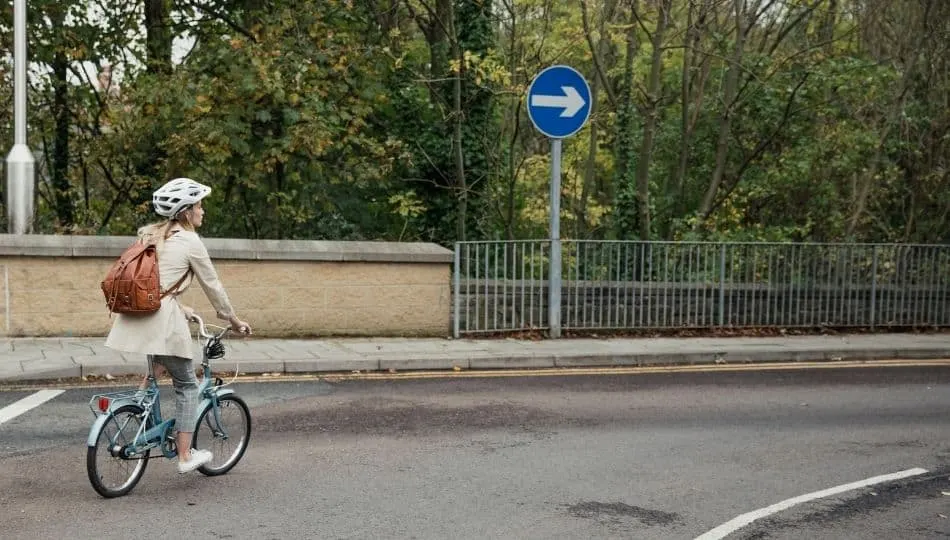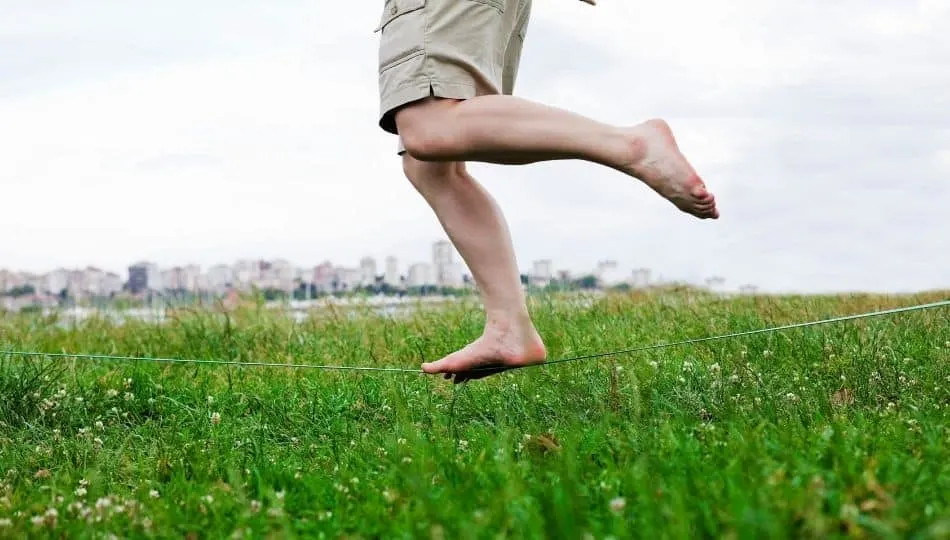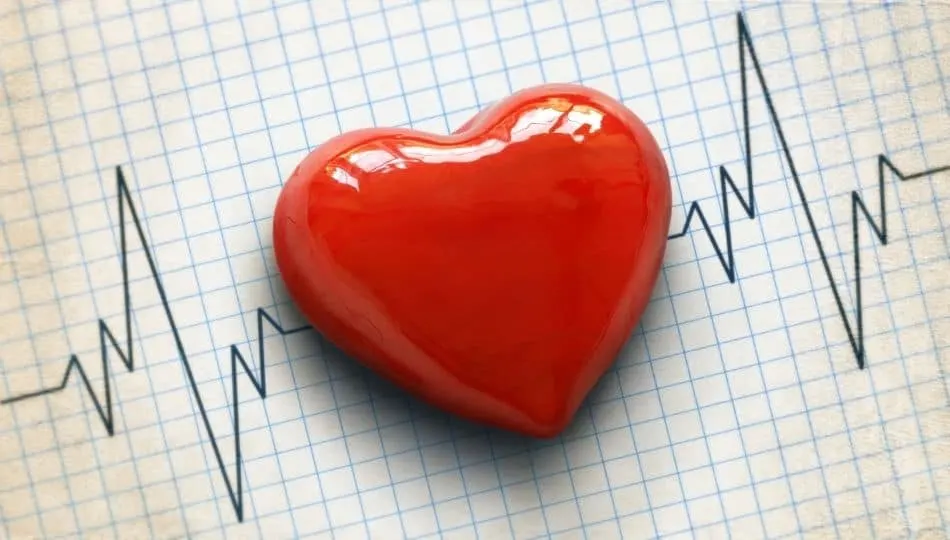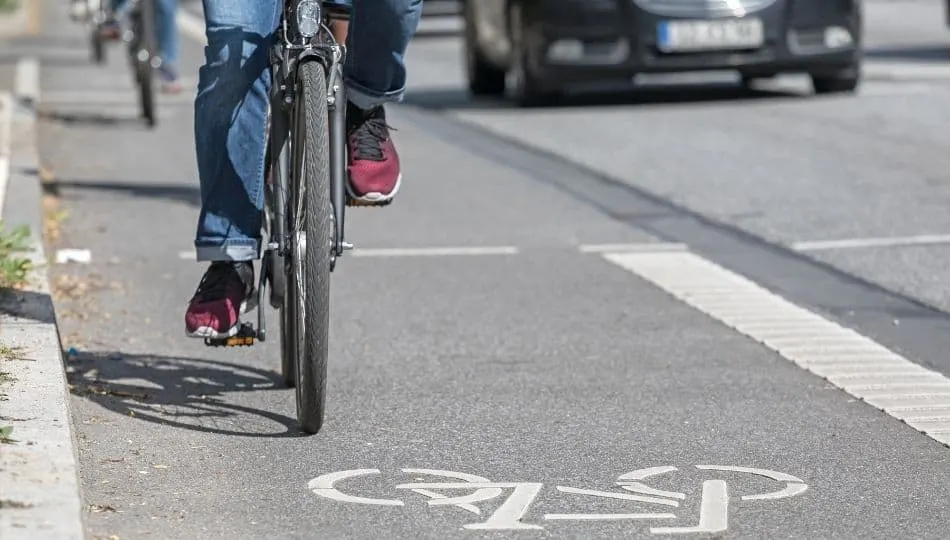
Cycling to work is becoming increasingly popular, as people are interested in finding alternatives to driving. Cycling is especially popular because it is good for your health while also being environmentally friendly.
Cycling to work is good exercise because it helps you lose weight, strengthen core and leg muscles, improve balance and coordination, and reduce your risk of disease. Cycling can also improve your mental health, strengthen your immune system, and help you sleep better at night.
If you’re thinking about cycling to work, read on to learn about all the benefits that you can get from changing your commute.
There are Many Health Benefits to Cycling
Cycling has been proven to improve physical health and endurance. It is an especially good form of exercise for people with joint and back issues, as it is low impact. Unlike running, your body is supported by the bicycle seat, and your legs are moving in a smooth motion, not pounding on the pavement. There are also many other benefits of cycling.
Cycling Improves Leg Strength
If you’ve ever ridden a bicycle, you know that the legs do most of the heavy lifting to power the bike. Cycling works out all the major muscle groups in your legs, especially the:
- Calves
- Glutes
- Hamstrings
- Quadriceps
The pedal’s downstroke activates the quadriceps in the front of your thigh, and the hamstrings help pull your leg up to complete the cycle. The calves get a workout with both movements.
You may have seen professional or Olympic cyclists and noticed that they often have very large upper legs. Remember that you are seeing muscle and not fat. You may notice as you begin cycling more often that your thighs are becoming more muscular. This is not a bad thing. More muscles can mean a faster metabolism. You’ll learn more about that later.
Whether or not your leg muscles grow substantially will depend on how much you ride your bike and how your body develops muscle. You can be certain, however, that your legs will be stronger after cycling to work.
You’ll Get a Great Core Workout
Your leg muscles are not the only ones to get a workout from cycling. Although the bicycle seat supports your upper body, you still need to use your core muscles to keep your body upright. You also use them to keep the bike in position and moving forward. You should be leaning forward at a 45-degree angle to reach the handlebar. Raise it up if you need to.
Cycling strengthens both your abdominals and your back muscles. They will support your spine, improving both your stability and your comfort as you cycle. The more you cycle, the more you’ll notice an improvement in your cycling posture. Don’t worry if you’re not perfect the first time you head out.
If you are looking for an intense core workout, you will need to supplement your cycling with exercises off the bike. Target your midsection with:
- Crunches
- Glute bridges
- Mountain Climbers
- Planks
Combining these workouts with daily cycling will make your core much stronger than cycling alone.
It Speeds Up Your Metabolism
Cycling is an excellent way to burn calories. According to the American College of Exercise, you can burn more than 600 calories with an hour of indoor cycling. The rates for outdoor cycling are similar.
Cycling also improves your metabolic rate. Your metabolism is the method your body uses to convert the food and drink you consume into energy. Your body needs a certain number of calories to perform its basic functions. Any extra calories you take in run the risk of being turned into fat. The good news is that cycling helps with that.
Muscle mass burns more calories than fat does, roughly three times as many. Therefore, the more muscle you have, the more calories you burn. If you replace 5 pounds of fat with 5 pounds of muscle, you’ll burn 20 more calories a day. That might not seem like much, but for weight loss, every little bit helps.
Cycling Improves Balance & Coordination

As we already showed, cycling can improve your stability on the bicycle by strengthening your core and back muscles. This can also improve your balance and coordination off the bike, which is important in your daily life.
As people grow older, their balance and coordination decline. This is why you hear so often about the risk of falling as an older adult. Combined with more fragile bones, falling in old age can be dangerous and life-threatening.
There are several reasons people lose their sense of balance as they age, from inner ear degradation to complications with medications.
Loss of muscle mass is a major factor. Strength and muscles help with reaction times. Improving balance and building muscle while cycling will help prevent falls as you age.
There are Mental Health Benefits to Cycling
Advocates of exercise will tell you that regularly working out will raise your endorphin levels and improve your mental health. Endorphins are hormones that produce a positive feeling in the body, similar to feeling triggered by opiates such as morphine. They limit your pain perception by interacting with receptors in your brain.
Aside from getting the benefit of endorphins, cycling is also a good way to get out in nature and away from the things that cause stress. By focusing on the road, you will be more aware of your surroundings and improve your concentration skills. Plan a route that goes through a park or less busy road to ride on to take advantage of being outside.
Your Lungs Will Get Stronger with Regular Cycling
Although you are likely to be sharing the road with cars and their exhaust fumes when cycling to work, you are actually improving your lung health as you go. There are several ways that cycling improves your lung health:
- Increased lung capacity: As you cycle, your lungs inflate and deflate faster than normal, and you take in more oxygen. Your ribs limit how much your lungs expand, but they can increase by 15% while exercising. More oxygen helps your muscles, and over time it will be easier to go longer and faster.
- Hard-working diaphragm: The diaphragm is a muscle that sits under the lungs and helps you breathe. When you cycle and engage your abs, the diaphragm can flatten out, enlarging your chest cavity. This causes a pressure change that forces air inside when you breathe, bringing more oxygen to power your muscles.
- Stronger respiratory muscles: Your respiratory muscles also become stronger when you cycle. The stronger your muscles are, the more oxygen you can extract from the air and the fitter you will get.
The first few times you are out on your bike, you may struggle and feel winded. Have faith that the more you cycle, the stronger your lungs will become, and your endurance will improve.
Strengthen Your Immune System with Cycling
Aerobic exercise, including cycling, has been shown to boost your immune system. According to a study done at Appalachian State University, regular moderate physical activity can reduce respiratory illness risk. 30 to 60 minutes of daily exercise can reduce the risk of illnesses such as influenza, the common cold, and pneumonia by as much as 50%.
Another key component of the immune system is the thymus, an organ that makes immune cells called T-cells. As people age, the organ shrinks, and fewer T-cells are produced. There is some evidence, though, that cyclists are able to produce more T-cells.
Doctors and other health professionals regularly recommend exercise to keep healthy. It is common knowledge that being overweight or obese can have adverse health effects. Exercise can help these people lose weight. However, even in healthy weight individuals, exercise reduces the risk of respiratory illness.
Decrease Your Cancer & Heart Disease Risks
Respiratory illnesses are not the only diseases that cycling can reduce. The risk of developing cancer and heart disease can also be reduced by exercising regularly. According to the MD Anderson Cancer Center, obesity can be a risk factor for postmenopausal breast cancer and colorectal cancer. Regularly exercising can reduce obesity.

If you are receiving cancer treatment, you might want to include cycling as part of your plan. Aside from the mental health benefits, cycling helps keep you lean and fit, reducing the risk of obesity.
The cardiovascular system is your heart and lungs. Diseases related to this system include:
- Heart Attack
- High blood pressure
- Stroke
You already know how cycling improves lung health, but it also improves heart health.
When you take up cycling, you’ll be strengthening your heart muscles and lowering your resting heart rate. A low resting heart rate is good for your health because your heart can pump more blood with each contraction. A high resting heart rate can lead to a heart attack or disease.
These changes, along with lower blood fat (triglycerides), will improve your overall cardiovascular health and help prevent a stroke or heart attack.
Cycling Will Help You Sleep Better
Sleep is an overlooked element of overall health. Sleep deprivation can be a factor in fitness. The University of Georgia found that sleep and fitness are connected and that a decline in fitness levels can lead to sleep problems. The decline doesn’t have to be drastic to negatively affect your health; only 2% for men and 4% for women.
The older people get, the harder it is to maintain fitness. Adults 45 and older who don’t exercise regularly will start to lose fitness quickly. It is important to work physical activity into your day. Cycling to work is an excellent way to do this.
Another way that cycling improves sleep is by improving mental health. A common reason for sleep problems is anxiety. The world is going through a lot, and people are feeling the strain on their mental health. Taking the time to exercise and increase those endorphins will go a long way toward reducing anxiety and sleeping better.
Finally, let’s not forget that cycling, like any other physical activity, is tiring. You use a lot of energy to get yourself from Point A to Point B on a bicycle. If you go from a relatively sedentary lifestyle to a more active one, you will naturally need more sleep to get through the day.
Lose Belly Fat With Cycling
Although your abdominals are not getting as much of a workout as your legs are while you cycle, you can still lose belly fat. Be prepared to sweat and move quickly.
The best way to get rid of excess body fat is to get your heart rate into the fat-burning zone. This zone is 70% of your maximum heart rate, which is the maximum times your heart can beat during a minute of intense exercise. You can calculate your maximum heart rate by subtracting your age from 220.
Ways to Reach the Fat Burning Zone
The longer your bike commute, the more time you can spend in your fat-burning zone, and the quicker you’ll see results. To maximize your efforts, you can incorporate a couple of workouts to keep your heart rate up:
- Interval Training: Mix up the speed of your ride by incorporating short bursts of all-out efforts with a shorter rest period in between. Adding intervals to the end of your commute will burn more calories and increase your metabolism.
- Steady Riding: You won’t burn as many calories, but a steady, moderately intense ride that keeps your heart rate up can also be effective for burning belly fat.
You might find that it is hard to reach a high level of intensity when you are cycling to work. The good news is that you have a bicycle that you can take out at any time. Make cycling a part of your workout routine to really burn belly fat.
Other Reasons to Cycle To Work
While cycling to work is an excellent way to lose weight and improve your overall health, there are many other benefits.
You Can Save a Lot of Money by Cycling
Commuting to work can be expensive. Public transportation costs can add up depending on how far you are traveling. If you drive, you need to pay for gas and to keep your car running. You might even need to pay for parking. If you are looking to cut down on your commuting costs, bike commuting is an excellent option.

Owning and operating a car is expensive. According to AAA, the average annual cost in 2016 was $8,558. Now, you don’t have to sell your car and go everywhere on your bike. You can save a lot in gas and repair costs by cutting down on your driving.
There are, of course, costs associated with a bicycle. You need to purchase one, as well as all the gear that goes with it. Bikes need to be maintained as well. If you decide to join a bike share program rather than buying a bike, there is that cost to consider. However, this is significantly less expensive than driving to work every day.
For more information on the exact cost savings of cycling to work, check out my article “How Much Money Can You Save by Cycling to Work”.
You Won’t Have to Sit in Traffic if you Cycle
Traffic is one of the worst parts of driving to work. It’s wasted time that could be put to better use. If you regularly encounter traffic on your way to work, you have probably adjusted your schedule to account for that time, meaning that you are getting up and leaving earlier than you need to.
If you bike to work, you won’t have to worry about sitting in traffic jams. You can take less congested roads and avoid the drivers sitting in their cars. Although you might think that taking a bike to work is slower than driving, you might find that to be false. You can keep moving the entire time you are riding, potentially making your commute shorter.
Don’t Spend Time Looking for Parking when you Cycle
If you work in an urban area, looking for parking can be stressful and time-consuming. Parking garages can fill quickly, and street parking is limited. Even if you work in a suburban area, parking can be hard to find. Don’t forget the cost of those garages and parking spaces. If you cycle to work, you don’t need to worry about these concerns.
Some cities, such as New York City, require commercial buildings to provide bicycle parking for their employees. If you work in a location that doesn’t have that requirement, you can buy a secure lock and chain it to a rack or a pole. If you are concerned about your bike being stolen or damaged, buy a folding bicycle you can store under your desk.
If you decide not to buy a bicycle but to join a bike share program instead, there are usually docking stations located in heavily-trafficked areas. Mobile apps will show you where you can leave the bike. You may need to walk a bit to your office, but this will only increase your daily exercise.
Enjoy Clean Air when Cycling
One of the health benefits we mentioned above was lung improvement. Part of this comes from breathing clean air. Even if you are cycling along a busy road, you are still benefiting from the fresh air around you.
Studies have shown that cyclists are less exposed to harmful air than drivers are. Cars can trap toxic fumes, and drivers breathe these in. This is even worse when stuck in traffic, right behind another expelling exhaust. The same study found that the exposure is even worse for bus riders. Meanwhile, cyclists move quickly through traffic, limiting their exposure.
It’s Environmentally Friendly to Cycle
It should be no surprise that bicycles are much more environmentally friendly than motor vehicles. If you cycle to work, you will be drastically reducing your carbon footprint. The only carbon emissions a cyclist emits is from breathing and sweating, which amounts to far less than the average car.
According to Cycling UK, driving a car emits 271 grams of CO2 per passenger kilometer (1.2 pounds per mile). Cycling produces just 0.7 grams (0.02 ounces). This is a very big difference. While it does take energy to manufacture bicycles, that energy equates to 60 kilojoules per passenger mile over a 15-year period as opposed to 4,027 kilojoules for a car (Momentum Mag).
You Can Get Smarter when you Cycle
Your brain gets a real workout when you cycle. In addition to improving your mental health, you can also boost your cognitive skills. Cycling requires high levels of focus. You will need to pay attention to cars, pedestrians, and other cyclists. You’ll also have to remember the different routes you can take to work.
There is research that shows that moderate exercise, such as cycling, can combat cognitive decline and improve your overall brain function. This is important as we age. Cycling to work will help keep your body fit and mind sharp as you grow older.
You’ll Help Make the Road Safer if you Cycle

A reason that many people give for not cycling to work is safety. Drivers are not always paying attention, and accidents can happen. These are not insignificant concerns, but the only way to make drivers more aware is to increase the number of cyclists on the road. Countries with high numbers of cyclists, like the Netherlands, include cyclist safety in their driving courses.
As more people cycle to work, cities may be more inclined to create dedicated bike lanes and other infrastructure to make cycling safer. While you should still be aware of drivers when you are cycling, a 2008 study in Australia showed that as the number of cyclists on the road increased, the number of collisions between cyclists and cars decreased.
You’ll Be More Productive At Work when you Cycle
Think about your mood when you arrive to work after sitting in traffic and spending time looking for parking. It’s probably not the most positive it could be. If you have to get up earlier than you would like to drive and sit in traffic, you are also probably not feeling particularly energetic and excited for work.
Cycling can help both your mood and energy levels, making you more productive at work. As you have learned, exercise produces endorphins, which lift your mood. You’ll be sleeping better and may be able to sleep later, depending on the length of your ride. Many people find exercising invigorating, so cycling can make you arrive ready to work hard.
For more detailed information about the benefits of cycling, check out my article “23 Advantages of Cycling to Work”
Tips for Cycling to Work
If you are interested in cycling to work, here are some tips for you before you begin:
- Use a Route Planner: If you’ve only ever driven to work, it can be hard to figure out what route to take that doesn’t involve highways or busy roads. Route planners will help you plan a route that is right for you.
- Do a Dry Run: Before you ride to work for the first time, take a dry run during a less busy time, in the evening or on the weekend. A route planner will tell you where to go, but not the road conditions or how long it will take you to travel. Go at an easy pace to determine the longest you can take.
- Choose the Right Luggage: If you are carrying a laptop or work materials, you want to make sure you have the right luggage for it. A backpack might seem like the right choice but think about how that will affect your balance. Bike panniers are a popular choice for many cyclists.
- Make Sure Your Lights Are Working: If you will be riding in the dark, bike lights are essential for your safety. Check to make sure your lights are working properly or install new ones. Make sure you have lights on both the front and rear of your bicycle.
- Wear a Helmet and High Visibility Clothes: Helmets are required by law and are essential for your health should you fall off your bicycle. High visibility clothes will give drivers a better chance of seeing you and avoiding a collision.
- Bring a Change of Clothes: You will get sweaty when you cycle, so bring a change of clothes with you. If your office doesn’t have shower facilities, use wet wipes and dry shampoo to make yourself presentable.
- Make Your Mornings Flexible: Although your cycling commute should be more predictable than when you drive, in the beginning, it may take longer than you expect. Schedule meetings for later in the day so you won’t miss them. The more often you cycle, the fitter you will become, and the shorter your ride will be.
Take these precautions, and you should have a successful bike commute. (Check out my article “20 Cycle to Work Hacks” for more tips on saving time and money when cycling to work).
It Doesn’t Have to Be All or Nothing…
Remember that if you are considering commuting by bike, you don’t need to commit to it every day in the beginning. If you are new to cycling, you might find it easiest to commute one or two days a week at first while you build up fitness. If you live in a cold or wet climate, you can reserve cycling to days when the weather is nice.
If you think you live too far from work to commute, you can always combine cycling with another form of transportation. Many buses have bike racks on the front of them. You can connect with ride-share programs and cycle to the pick-up locations and secure your bike there. There are ways to make cycling work with long-distance commutes.
Even if you don’t cycle to work every day, you will still be getting all the benefits we listed here. You will be doing your part to improve your health and the environment.
